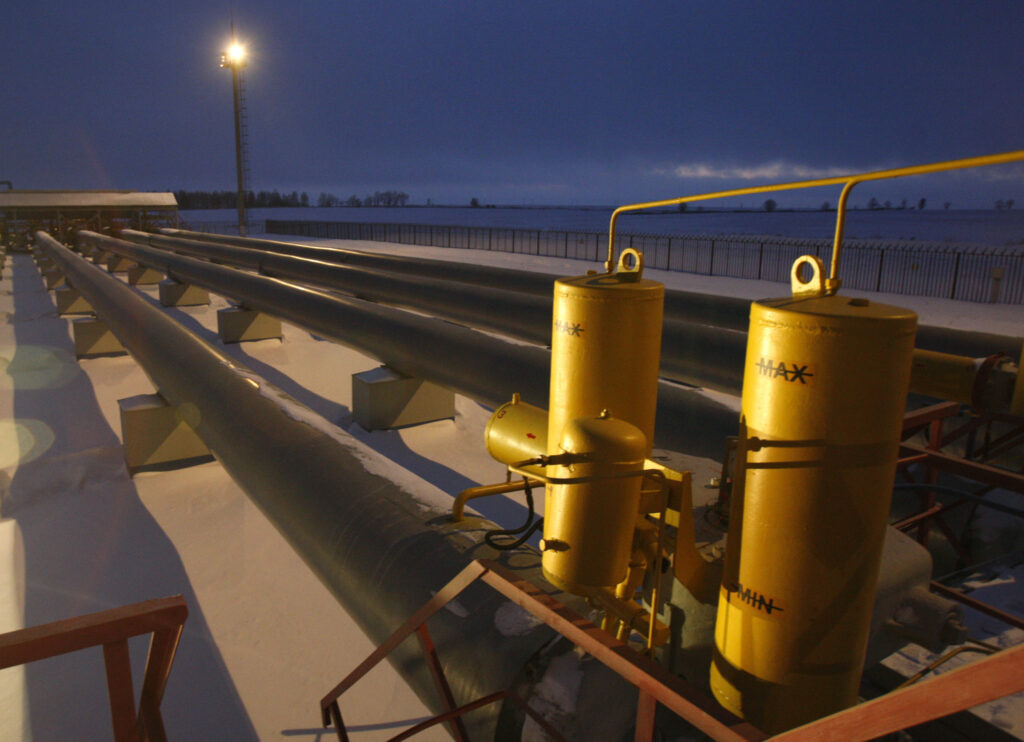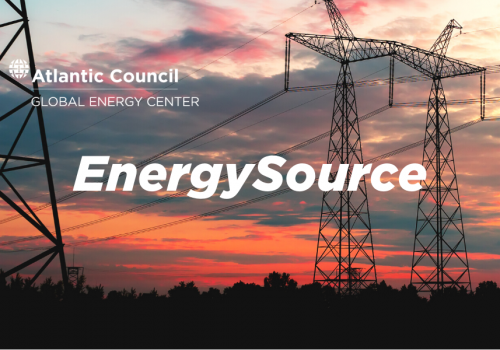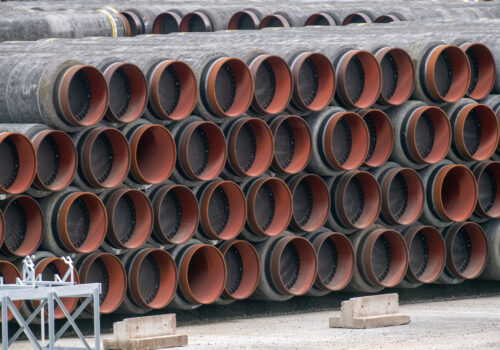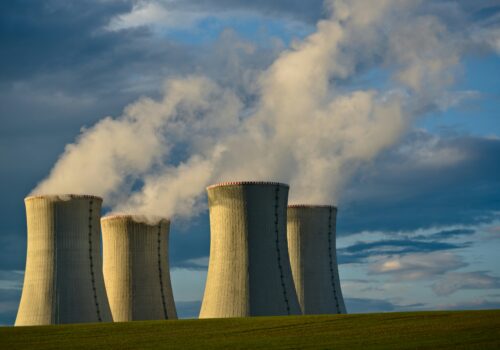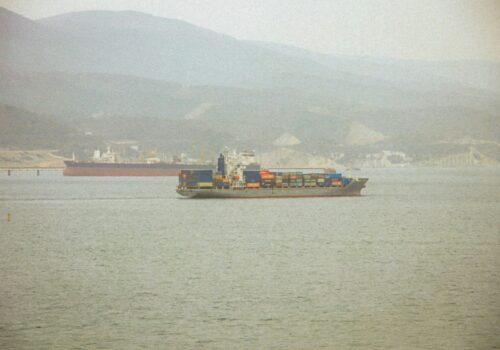The possibility of resuming Russian gas supplies to Europe as part of a cease-fire agreement in Ukraine is being actively discussed. Technically, this would be feasible—Ukraine’s gas transmission system is still capable of transiting up to 100 billion cubic meters (bcm) per year of Russian gas to Europe.
Nearly three months of zero gas flows have shown that Europe can manage without the volumes of Russian gas that previously transited Ukraine—only 15 bcm in 2024, compared to 84 bcm in 2019. Nevertheless, rumors of possible restoration of Russian gas deliveries to the European Union (EU)—either via Nord Stream or through Ukraine—continue to circulate in the press. Resuming this trade could be a potential Russian condition for halting hostilities as Russia desperately needs gas export revenues. If that is the case, resumed flows might be a necessary step to create peace. But they must be routed through Ukraine and under conditions that will ensure energy security and full transparency.
STAY CONNECTED
Sign up for PowerPlay, the Atlantic Council’s bimonthly newsletter keeping you up to date on all facets of the energy transition.
Russia is extremely interested in resuming supplies to the premium European gas market. Since 2021, Russia has lost more than 100 bcm per year of gas exports to Europe, undermining Gazprom’s financial stability. Desperate attempts by Gazprom to redirect exports to Central Asia and China have not brought significant financial returns, as prices there are two-and-a-half times lower than European prices. Moreover, pipeline export capacity to those markets is very limited. Russia’s direct pipeline export capacity to China currently stands at 38 bcm per year via Power of Siberia. This infrastructure is not connected to the large gas fields historically used to supply European markets. Additionally, Russia’s ability to export liquefied natural gas (LNG) faces significant constraints due to US sanctions. To cushion the loss of the European market, the Russian government has been forced to raise domestic prices, an unusual and very unpopular move in the country.
Additionally, the Kremlin is eager to maintain its political influence over Europe, including through export revenues. Hungary and Slovakia are clear examples of how this influence manifests—both nations have repeatedly opposed or diluted EU sanctions against Russia and blocked critical financial and military support for Ukraine.
The Russian government and several members of the German far right regularly raise the issue of resuming Russian gas supplies to Germany via the surviving branch of the Nord Stream 2 pipeline, which has a capacity of 27.5 bcm per year. However, German authorities categorically rule out the possibility of such a resumption. Other Northern European countries, as well as Poland and the Baltic states, also strongly oppose restoring transit through Nord Stream, fearing increased militarization of the Baltic Sea and the potential reversion to EU dependence on Russian gas. Resuming transit through Poland is also unlikely, for both political and technical reasons, as the Yamal–Europe pipeline has now been almost fully integrated into Poland’s domestic gas system and can no longer handle flows from Russia.
This leaves Ukraine as the most feasible route for resuming Russian gas deliveries to Europe.
EU officials and most member states officially do not support the idea of resuming gas transit through Ukraine. However, the EU has not imposed sanctions on Russian pipeline gas or LNG, allowing Russia to retain a significant market share in Europe. The European Commission continues to reaffirm its commitment to phasing out Russian gas completely by 2027, and this month plans to present a detailed roadmap for this process.
Unfortunately, the European Commission has been unable to fully ban Russian gas imports. Combined pipeline and LNG imports from Russia accounted for less than 19 percent of total EU gas inflows in 2024. However, there may be concern that a complete ban could significantly impact gas prices in Europe. Given that the Commission has outlined a plan—not a binding commitment—to fully phase out Russian gas by 2027, it might opt to delay sanctions on Russian gas until then in exchange for peace. The anticipated influx of new LNG volumes from the United States, Canada, and Qatar between 2026–28 could mitigate EU concerns about price volatility during this transitional period.
The position of the United States will be determinative. On one hand, the Trump administration consistently demands that EU countries increase purchases of US LNG and may not welcome significant increases in Russian gas imports to Europe. However, for the sake of a peace deal, Trump may agree to limited imports of up to 15 bcm annually—a volume that flowed via Ukraine in 2024 and would have only a minor impact on US exports to Europe.
As for Ukraine, estimated annual revenues of $400–600 million from Russian gas transit are a miniscule contribution to the economy. Therefore, the question of resuming transit should be considered in a broader context of cease-fire agreements and establishing long-term peace. Continued transit of Russian oil and renewed gas transit through Ukraine could allow Russia to earn up to $12 billion annually. Accordingly, Ukraine is entitled to expect not only transit fees of around $200 million for oil and an estimated $400–600 million for gas, but also significant additional concessions from Russia.
These concessions should include Ukrainian control over the Zaporizhzhia nuclear power plant, which can produce 6 gigawatts of electricity annually, but was occupied by Russia in 2022. This would help balance Ukraine’s power system, large parts of which have been destroyed by Russian missile and drone attacks, and eliminate the need to import electricity from the EU. It is worth noting that Russian control over the plant has little economic sense, as Russia cannot restart the plant without restoring the Kakhovka Reservoir, which is unlikely without Ukrainian cooperation.
Additionally, Ukraine has the right to demand 15–20 percent of Russian oil and gas exports—either in monetary terms or in kind—as a transit tax. These funds should go into a special fund for the restoration of Ukraine’s energy production, which has been destroyed by Russian attacks. The proposed percentage is reasonable, given the existing discounts on Russian oil and gas which, as sanctions are lifted, should disappear.
In order to limit Kremlin’s influence on the European gas market and on political processes within Europe, the EU should place red lines on its reengagement with Russian energy.
First, import volumes of Russian gas should be capped, both for the entire EU and for individual member states, to prevent any renewed dependency on Russian energy supplies.
Second, gas purchases should be carried out collectively through the AggregateEU initiative, with the delivery point for European buyers located at the Russia–Ukraine border. This would eliminate Gazprom’s ability to offer politically motivated pricing to more loyal countries and energy companies.
Finally, the EU and Ukraine should create an international consortium to manage Ukraine’s gas transmission system. This idea was explored in 2018, and its revival could increase European traders’ confidence in transit reliability through Ukraine.
Conclusion
If a cease-fire necessitates resuming Russian gas flows to Europe, it must flow via Ukraine and be conditional on key concessions from Russia. These must include safeguards to ensure that the EU does not become dependent on Russian gas again and that Moscow can no longer use gas as political leverage. Ukraine should also regain control over vital energy assets like the Zaporizhzhia nuclear plant and secure a substantial transit tax for reconstruction of its energy infrastructure. Policymakers in Kyiv, Brussels, and Washington must remain resolute in demanding these terms to ensure any peace agreement reinforces, rather than undermines, regional stability and energy security.
Sergiy Makogon is a non-resident senior fellow at the Center for European Policy Analysis and the former CEO of GasTSO of Ukraine (2019-2022).
RELATED CONTENT
OUR WORK
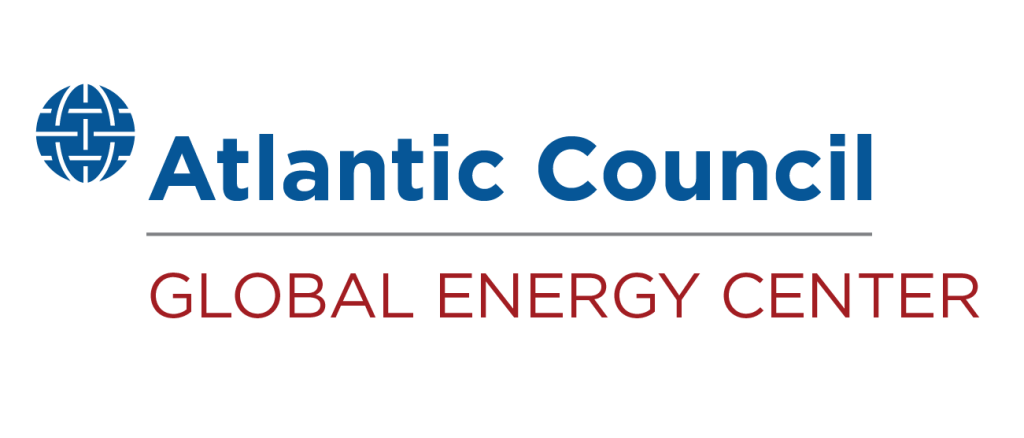
The Global Energy Center develops and promotes pragmatic and nonpartisan policy solutions designed to advance global energy security, enhance economic opportunity, and accelerate pathways to net-zero emissions.
Image: Pipelines are seen at a gas compressor station in Sudzha in Russia's Kursk region on January 11, 2009. REUTERS/Gleb Garanich
